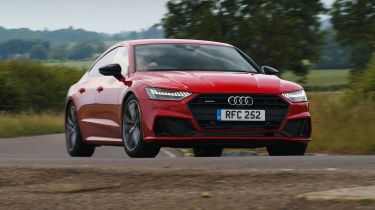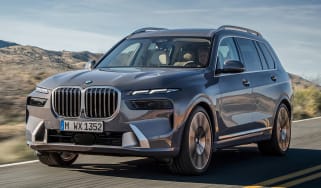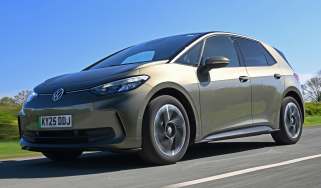Audi A7 Sportback - MPG, CO2 and running costs
Mild-hybrid systems help to save fuel when cruising, but not as much as you might hope

With both the petrol and diesel engines utilising Audi’s 48v mild-hybrid system, the Audi A7 Sportback line-up is reasonably competitive regarding the claimed WLTP fuel economy. Of course, the plug-in hybrid A7 TFSI e is the star of the show here.
Starting with the petrol A7, the 2.0-litre 45 TFSI has claimed economy figures of up to 36.7mpg and emissions of 188g/km. Predictably, the 2.0-litre 40 TDI diesel has the advantage when it comes to fuel economy, returning up to 49.6mph on the WLTP combined cycle. CO2 emissions start from 163g/km.
Company car users will be best suited to the 50 TFSI e plug-in model, which has a claimed fuel economy figure of up to 217.3mpg. Unfortunately, reproducing this figure in the real world will be difficult, but you can certainly expect to match or beat the diesel model’s efficiency with regular charging. The PHEV also claimed CO2 emissions of as low as 31g/km and an all-electric driving range of 41 miles. However, this model won't deliver the Benefit-in-Kind tax and running cost savings that a fully-electric car can provide.
The S7’s TDI diesel engine means it can prove surprisingly economical for a more performance-oriented model. Provided you haven’t got your right foot constantly glued to the floor, Audi claims the S7 can achieve 39.2mpg, while its CO2 emissions start from 189g/km.
The RS 7, on the other hand, is powered by a thundering twin-turbo V8 petrol, so the economy is pretty much as you’d expect. At best, you’ll be looking at 23.2mpg on the WLTP combined cycle, along with a CO2 figure of 276g/km.
Insurance
The A7s insurance groups are pretty typical for a car in this class. The 2.0-litre petrol and diesel line-up range from group 42E to 46E, depending on your chosen trim level. The plug-in hybrid TFSI e is pricier, ranging from group 47E to 50E. Unsurprisingly, the S7 and RS 7 both sit in group 50E. In comparison, the Audi A6 line-up starts much lower down in group 33E.
Depreciation
Our expert data suggests that the Audi A7 Sportback should retain between 38-43 per cent of its value over three years/36,000 miles. The plug-in hybrid models find themselves at the bottom of this range, while the petrol and diesel models stay above 41 per cent. Be careful with the options list, however, as it’s easy to add thousands to the car’s list price that you won’t recoup come resale time.








